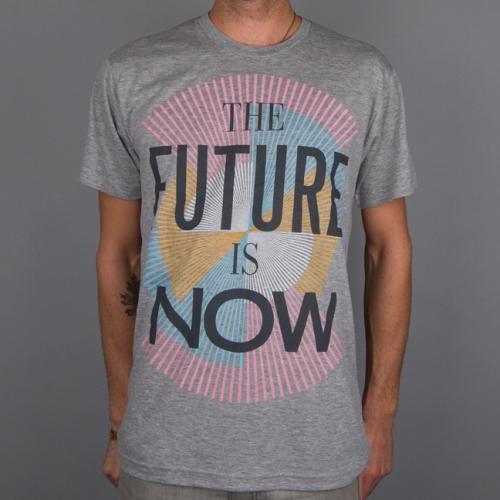
Hello and happy Thursday everyone!!!
It’s an absolutely stunning day in NYC today. The skies are brilliant blue, the temperature is mild and the sun is splendid and warm. It’s a great day to be alive … and alive as a VINTAGE LOVER, to boot!
Thanks to all of my great communication with you, I’ve learned so much about our ever-evolving relationship to our personal style and self-expression. Lately, many YouTubers & Facebook vintage lovers have shared regret from not saving their grandmother’s/mother’s possessions that are considered vintage today.
This remorse inspired me to reflect on what I own TODAY that will be considered vintage TOMORROW — or at least, 20 + years down the road as our society’s definition of trends and culture shifts, shimmies and transforms with the times.
While I’m no psychic, the experiences of the past are teaching moments for the future. The ascot blouses our mom’s wore to their first jobs in the ’70s are considered vintage pieces today — but did my mom ever think to actually KEEP her ascot blouses? No! They were a dime and dozen when she graduated college in ’73, so instead of saving them for her “Sammy-to-be” she donated them and absorbed the new fashion that was popular with the time.
I’m no mother now, but I hope to be someday! I want to save a few “trends of today” for the “vintage fashion of tomorrow” that my daughter (or future Sammy Davis Vintage customers?!) can enjoy in their wardrobes and beautiful expression of style for themselves.
So vintage lovers, keep reading after the jump for 10 fun predictions of what might be considered “vintage” in decades of the future that we regularly wear now!
In this week’s video, I visited the home of my friend’s grandmother for a fun “vintage haul” of pieces dating as early as the ’50s. My friend generously bequeathed the pieces to me instead of inheriting them from her grandmother, who was given the pieces from her 99-year-old friend!
The experience inspired me to remind everyone to ask their relatives for vintage styles they may have hanging in their closet right now. You’ll have a chance to connect with your family over memories from the clothing, as well as breathe new life into pieces that deserve to be loved and shared with the world.
Have ideas for “vintage fashion of the future” to add to this post? I’m looking at it a lot like the Thrift Jargon 101 dictionary … I want user contributions from YOU!
Send me ideas on Facebook, Twitter, Tumblr (brand new!), YouTube and little ‘ole email!
We can spread vintage love many ways — and keeping some of the styles today for the vintage lovers of tomorrow is one way to spread that love and maintain our own feel-good style peace!
xx, SD
VINTAGE OF THE FUTURE: THONGS

YEAR OF INVENTION: 1964
MODERN HISTORY: The thong was first introduced to fashion by designer Rudi Gernreich in the mid ’60s, who included a thong bikini in a swim suit.
As underwear, the thong gained popularity in the ’90s — remember that awful trend of letting the thong “hang out” of denim jeans as teenagers? What were we thinking?! ;-)
VINTAGE OF THE FUTURE: Like corsets, slips & garter belts, the “thong” will be replaced with a new type of lingerie for the future.
Whether it’s a return to more conservative, full-coverage underwear as clothing styles shift from tight to loose and no longer require the seamless lack of panty line from the thong; or perhaps underwear will become “embedded” in clothing and removable to wash, almost like velcro shoulder pads of the ’80s — the “underwear predictions of the future” are ours to imagine and the decades ahead to create!
MODERN VERSIONS I DIG: Victoria’s Secret thongs: They’re too classic not to give a shout out!
VINTAGE OF THE FUTURE: OLD NAVY FLEECE
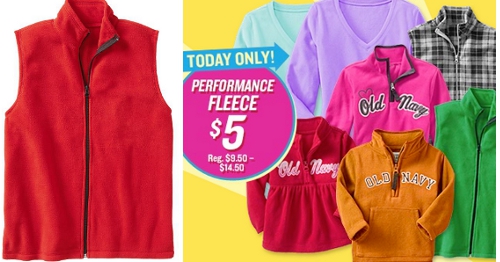
YEAR OF INVENTION: Old Navy was founded in 1994
MODERN HISTORY: When I was about 13 years old, the first Old Navy moved into a strip mall in my town. It was such a big deal! The fashions were plentiful, inexpensive and most importantly, appropriate for a label-loving teen.
I remember asking for an Old Navy fleece that Christmas because “all the kids had it.” I must have worn that thing to death! I no longer own it, but if I had been a forward-thinking vintage lover in 1999, I would have kept my Old Navy performance fleece with wisdom that the style would someday return to its “I gotta have it” glory!
VINTAGE OF THE FUTURE: I make particular note of Old Navy, but any kind of fleece vest/jacket is applicable with this prediction. It’s the fleece material that will most likely be the coveted characteristic of the piece in the future — almost like we covet lace/linen/silk materials with our vintage today.
Especially as our society develops as a more eco-conscious producer of fashion, resource-depleting materials like fleece will fade and be replaced with recycled materials and more planet-friendly production methods.
MODERN VERSIONS I DIG: North Face fleece jackets, because they are such great staples for hiking or hanging around town!
VINTAGE OF THE FUTURE: UGG BOOTS
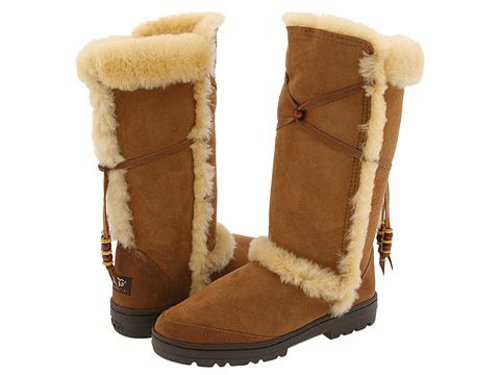
YEAR OF INVENTION: 1920s, with mainstream popularity beginning to soar in 1995
MODERN HISTORY: UGG boots are sheepskin boots with origins argued by both makers in Australia and New Zealand.
The idea of wearing sheepskin on your feet actually began among Australian farmers in the ’20s. Sheepskin shoes began to be produced for the masses by Blue Mountain in 1933 and then the Mortels Sheepskin Factory in the ’50s.
The boot’s first wave of popularity was thanks to surfers in the ’60s, who wore the boots for warmth after emerging from the cold waters of their sport. But it was in 1995 — when UGG was sold to another company — that the brand gained mainstream promotion thanks to celebrity affections from the likes of Kate Hudson, Sarah Jessica Parker and Oprah Winfrey.
Flash forward to the early 2000s, and UGG boots were seen on every sorority girl from the east coast to the west and every college town in between.
VINTAGE OF THE FUTURE: UGG boots are not cheap! While they are made in China today, the materials and construction as a “boot” versus a fashion shoe still maintain some longevity and strength to the shoe.
I own a pair of sheepskin boots from New Zealand that my mom purchased for me when vacationing there. I’m definitely keeping them for my “Sammy-of-the-future” so that she can comfortably plop around the house in them, too!
MODERN VERSIONS I DIG: For the REAL McCoy of sheepskin boots, buy ’em from an Australian company in the slipper version (for maximum comfort!)
VINTAGE OF THE FUTURE: KEYCHAINS
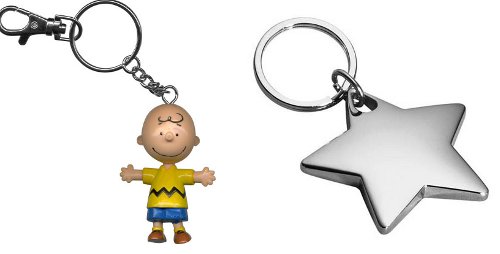
YEAR OF INVENTION: 1950s
MODERN HISTORY: Keychains are a kitchy way to bling up your car keys, which remain some of the most important “pocket accessories” any modern man or woman owns.
How many times have we proclaimed to ourselves or a family member, “Where are my car keys?!?!” Thanks to key chains, our automobile turn-on devices are easier to find in a full purse or on a messy desk.
Keychains were first introduced in the ’50s/’60s as promotional materials for various companies. During that time, the average family had the “family vehicle.” Today, many families have a one-car-per-family-member ratio … that’s a LOT of keychains!
VINTAGE OF THE FUTURE: You could argue against me on this one since for collectors, keychains already ARE vintage. But, keep in mind I’m referring to keychains of TODAY, especially from companies/brands/cultural icons that might not exist tomorrow.
Take that show The Jersey Shore, for example. If there is a keychain with Snooki’s face on it and you happen to be in possession of it, keep it! It will at least offer someone a laugh in 20 years when they look back and marvel at the ridiculousness of reality TV.
Or, it could prove to be a valuable piece of entertainment history. Only the future can tell, and it’s not talking today ;-)
MODERN VERSIONS I DIG: Just for laughs, take a look at this keychain … I promise you’ll be cracking up at this little joke!
VINTAGE OF THE FUTURE: COLLARED SHIRTS

YEAR OF INVENTION: 1920s, founding of Lacoste brand in 1933
MODERN HISTORY: Sure, we know the “popped collar tee” well from fraternity brothers to rap stars who sing about it — but the real origin of the collared shirt isn’t in the TKE house or a music video at all.
The quintessential collared shirt was first designed by tennis star Rene Lacoste, who designed the shirt out of necessity as he realized his “tennis attire” wasn’t working to his advantage as he progressed in the sport.
The tennis star was nicknamed “Crocodile” by the press — hence, the cute little croc emblem found on the left chest of all Lacoste shirts. When Rene retired from the sport in 1933, he combined forces with a fashion house to begin mass producing the pique-cotton “tennis” shirt.
VINTAGE OF THE FUTURE: I might be wrong, but when was the last time you saw a Lacoste collared shirt on the professional tennis court?
The style has obviously transitioned from sport to casual wear — making Lacoste shirts of today just one representation of style wear potential. Maybe Lacoste shirts will become the “uniform” of corporate executives in the future, or perhaps Lacoste will completely reinvent itself from polished prep to gnarly grunge.
Who knows! All I know is when I invest nearly $75 in a cotton shirt, I’m going to keep it for future vintage lovers in my life.
MODERN VERSIONS I DIG: Admittedly, the Lacoste versions for women are a bit pricey, but when taken care of are of high-quality and craftsmanship to last as a polished go-to piece for years.
Sister brand Ralph Lauren offers the same look for less — and a skinny version of the classic cut is on sale right now!
VINTAGE OF THE FUTURE: WRISTLET WALLETS
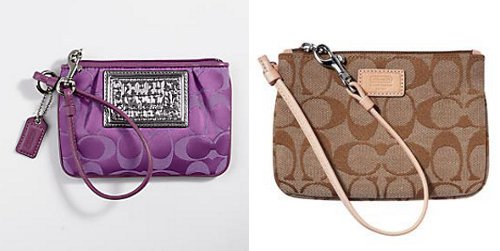
YEAR OF INVENTION: The wristlet was introduced in the mid ’90s
MODERN HISTORY: The modern wallet most of us are comfortable with today — whether it’s designed for a female OR a male — originates in some shape or form from the designs of the ’50s, which were influenced by the invention of that little bit of plastic we both love & loathe: the credit card.
By the late 20th century, the practicality of a functional wallet had evolved to suit a variety of style purposes. One example is the “wristlet” wallet, which secures around your wrist so that your actual fingers are kept free.
These wristlet wallets usually have removable straps so that you can carry the body of the wallet in the palm of your hand as well, but we know them best as wrist accessories suited for special occasions like dinner, prom, weddings and the like.
The wristlet’s most notable contribution to style is that it relieved women of having to “clutch” the clutch in their hands all night long, or wear a purse around their shoulder which would clash against formal attire and/or make the entire look more casual than the wearer wishes to present herself.
VINTAGE OF THE FUTURE: Like wallets evolved from the invention of the credit card, the design of wallets will continue to evolve as its current utilitarian use fades in necessity with the introduction of new mobile technology. I predict that by 2020, everyone will have credit card technology as an app of sorts in smart phones that are used as mini scanners to make on-the-spot purchases.
In other words: The “check out” person at the counter will cease to exist. We will simply use our phones to scan the item we wish to purchase and grab our own shopping bag for it as we walk out the door.
Sure, maybe some old school plastic veterans will continue to swipe for purchase … but when you think about how many people use cash vs. card today, the “cash” sect continues to lessen and fall deeper into the minority. The same will apply to today’s plastic loving population for the future.
MODERN VERSIONS I DIG: It may be $198, but that’s considerably less than a full-size Coach bag. Plus, the wristlet wallet inspires us to carry less so that we have free hands for whatever awesome activity we’re participating in. I love the white eyelet version available to buy on the Coach site now.
VINTAGE OF THE FUTURE: CHRISTIAN LOUBOUTIN “RED BOTTOM” HEELS
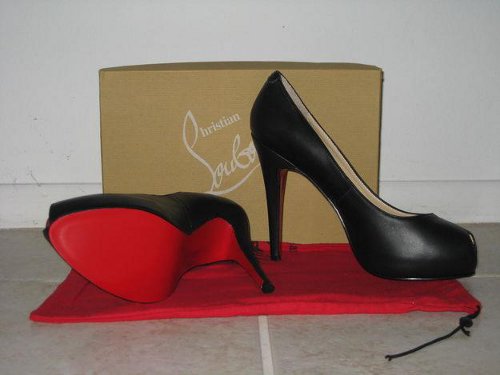
YEAR OF INVENTION: Christian Louboutin was founded in 1991
MODERN HISTORY: Christian Louboutin is a French footwear designer who launched his signature line — and revitalized the industry of the “high heel” stiletto — in 1991.
Now, many a lady covets the “red soled shoe” that Christian invented after testing red nail polish on the sole of a shoe-in-progress. His delight at the contrast inspired what we now know as those red-soled Louies today.
VINTAGE OF THE FUTURE: Since the line is actually JUST now considered vintage by industry standards (at least 20 years old), it’s safe to say that investing in a pair to keep for the rest of your stylish life is a smart way to spend a couple hundred dollars, as the average pair is retailed for.
Like Italian Ferragamos of yesterday (check out my Ferragamo history) are collector’s items for vintage shoe lovers today, I predict that we’ll see the “original” CLs gain prominence as historically significant and stylishly vintage artifacts in fashion history.
MODERN VERSIONS I DIG: For nearly $600 new on the Christian Louboutin site, I’d invest in a classic, timeless pair of black round toe pumps with the red sole bottom like these. These are the kinds of shoes you can wear with anything from jeans to a skirt suit for a job interview.
Make friends with your neighborhood cobbler so that you can repair damaged red soles and replace heel tips seasonally to keep them in prime & polished condition. If you take good care of your Louies, your daughter (or any future vintage lover!) will have opportunity to strut in red-soled stilettos in true vintage style.
VINTAGE OF THE FUTURE: POP MUSIC CONCERT TEES
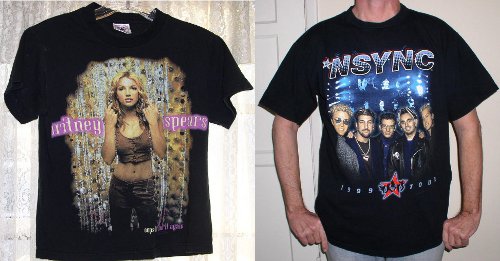
YEAR OF INVENTION: Concert tees first debuted in the ’60s
MODERN HISTORY: Concert tees are nothing “new.” After posting the above picture on the Sammy Davis Vintage Facebook page, a few vintage lovers shared that they still had old concert tees from the ’70s and ’80s (Bruce Springsteen, anyone?!)
But what’s truly vintage are the “images” of musical artists on the tees themselves, like we see with this 1999 picture of Britney Spears and N*Sync, from the same year.
So while the concept of the T-shirt might not be vintage, take note of the experience (the concert itself!) and the music, image and culture of the times that it represented. (Pop music obsession in the year 2000, anyone?)
VINTAGE OF THE FUTURE: Didn’t make the No Strings Attached tour for N*Sync when you were 14 like me? (those tickets were $85 back in the day, yeesh!)
No problem! There are — and if music execs have their way, always will be — modern day equivalents to past pop sensations. Look for Justin Beiber, Taylor Swift, Lady Gaga, etc. concert tees today.
Search them out first at thrift stores, or ask a friend to grab a shirt for you if they attend one of these top 40 music concerts.
Or perhaps you’re a Justin or Gaga lover yourself! Then make sure you bring enough cash to a concert in order to score an iconic tee that will surely gain value as the musical tastes and entertainment of the times evolve.
Keeping the original means you’ll have the real deal when sites like Vintage T-shirts reproduce the designs to sell in mass production. Plus, some of the vintage tees of yesterday are fetching upwards of $300 on auction sites like Ebay!
MODERN VERSIONS I DIG: For a reproduction of a vintage-inspired “rock tee,” check out sites like T-shirts.com for your rock n’ roll fashion fix. I’m loving this one with the Rolling Stones logo (Gimme Shelter is currently playing in summer jams playlist!)
But to invest in the REAL deal, check out Ebay to see what relatively inexpensive concert tees from recent years are being sold. Buy ’em up — like this one from Lady Gaga’s “Born This Way” concert tour — and keep locked safe in a drawer to reveal in 20+ years to its full vintage glory.
VINTAGE OF THE FUTURE: JUICY COUTURE VELOUR TRACK SUITS
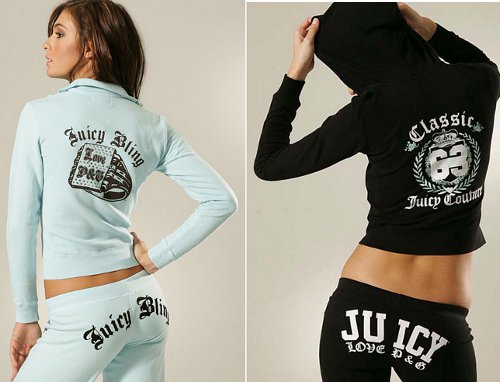
YEAR OF INVENTION: Juicy Couture was founded in LA in 1996
MODERN HISTORY: Founded in sunny Los Angeles, California in 1996, Juicy Couture totes itself as a clothier of “high quality sportswear at affordable prices.”
We all know the “Juicy” butt as seen on the velour track suits beginning in the early 2000s. These matchy-ensembles became every woman’s go-to comfort outfit from the grocery store to the airport to walking out and about on urban streets of LA, NYC, Miami and beyond.
The velour tracksuit — whether worn as a set or pieces worn separately — can be purchased in a variety of colors (bright pink or orange, anyone?) and with different “Juicy logos” emblazoned on your bum or vertically down the sides of the pant. Talk about drawing attention to your greatest asset!
VINTAGE OF THE FUTURE: The Juicy tracksuit was first introduced in 2001. With 10 years of history behind it, we can easily find a few versions for less at a thrift store to keep stored away for that day “the tracksuit” completely fades into obscurity and the idea of wearing typography on your bum is just a memory.
The trick to revealing a style that’s “vintage” is to recognize that the trend has disappeared from the mainstream, but would be coveted by the alternative, more “hipster” sect of the style population. Most trends that we turn to for our streetwear style today were first adopted by a minority population of tastemakers who enjoy pushing the envelope time and time again.
So if we can get Williamsburg hipsters (or wherever future hipsters may live!) to adopt Juicy Couture tracksuits in 30 years, within a few seasons from their adoption everyone will be looking for vintage “Juicy” to wear once again!
MODERN VERSIONS I DIG: I’m more of a shorts girl than a sweats girl (must be this thing I love called running), but I can’t help but smile at the thought of rocking out in this pink tracksuit with “Juicy Love New York” embroidered on my derriere. I think I can dig!
VINTAGE OF THE FUTURE: ABERCROMBIE & FITCH SWEATSHIRTS
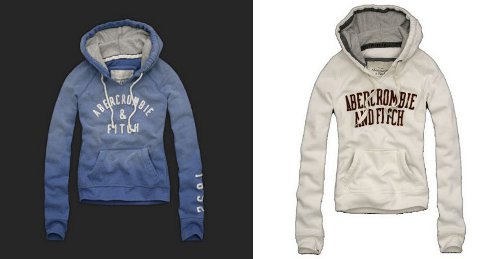
YEAR OF INVENTION: Abercrombie & Fitch was founded in 1892 as a sportswear/hunting/camping clothier. See my article on “vintage tag history” for more insight into the origins of A&F.
MODERN HISTORY: Abercrombie & Fitch was reinvented as a mainstream youth-driven casual wear brand after being bought by The Limited in the mid ’90s. That’s when we began to see the ubiquitous “hot male ab posters” popping up in malls across America, along with that strangely intoxicating smell of A&F cologne on males aged 13 to 20.
I remember feeling like I had to own something from Abercrombie when I was a teenager. My small town was about 60 miles from the nearest store on the outskirts of Philadelphia; so the kids who had A&F were also promoting the privilege of being able to drive an hour and back to the store.
Thankfully I fell in love with thrifting and vintage fashion by age 15 and my “need” to own A&F waned. But I’m sure that many of you shopped there in your youth, and may still own a thing or two from this iconic brand that has become representative of American casual wear today.
VINTAGE OF THE FUTURE: Vintage that is marked with labels and namebrands — think costume jewelry, especially — is always viewed and sold for a higher value than something which remains unmarked.
Considering the “logo” era of brands originated recently around the early ’90s, we have yet to fully understand how the markings of brands will influence their value for the vintage of the future. My prediction is that the classic Abercrombie & Fitch sweatshirt will bear some significance in decades to come.
Some of the logos use the ampersand “&” marking while others spell out “AND,” while still others are embroidered on the back or sleeve of the sweatshirt.
If you own or are able to purchase a limited edition release of an A&F logo sweatshirt — keep it! You never know how many were produced, so the odds are in your favor of being one of a few individuals keeping that piece of fashion logo history to indulge the interests of future vintage lovers and style history aficionados.
MODERN VERSIONS I DIG: I can confidently say that more than 10 years after the “A&F pressure” of my childhood, I no longer detest the brand and wouldn’t mind owning a soft cotton version of their classic sweatshirts.
While I’d rather thrift mine for less, the A&F site does carry a cute version in a bright blue hoodie that has a sport flag design with “NY ATH” below the Abercrombie logo. I’m a sucker for anything that promotes NYC! ;-)
I’ll be adding to this post regularly — there will be vintage fashion of the future part II and beyond!
Let me know what pieces you have in your closets now that you want to keep for the future by leaving a comment below! xx

I saw someone in a Spice Girls t-shirt yesterday!
Interesting! I can definitely see UGG boots and velour suits one day being vintage.
You have made some decent points there. I checked on the internet to learn more about the issue
and found most individuals will go along with your views
on this web site.
Hey would you mind letting me know which web host you’re utilizing? I’ve loaded
your blog in 3 completely different browsers and I must say
this blog loads a lot faster then most. Can you suggest a good web hosting provider
at a honest price? Many thanks, I appreciate it!
This text is priceless. Where can I find out more?